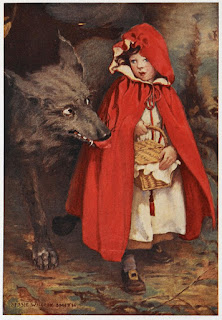"Sweet Porridge" Jamaican Style!
 |
| [1] |
From 1437 to 1439 "there was a succession of wet summers and harvests were ruined, the peasantry was reduced to eating such herbs and roots as they could gather from the hedgerows, and thousands died."(Drummond and Wilbraham, 88)[2] "Sweet Porridge" most definitely reflects these times. The girls mother is widowed so financial hardship is big struggle. The girl ventures into the
woods to find something edible and stumbles across an old lady who gives her a magic pot that would cook sweet millet porridge. Famine and food deprivation was a frequent struggle of life in Europe during the Middle Ages, so one can understand how these circumstances can lead to a fantasy such as a magic pot that produces endless sweet porridge. Understanding that its through adverse circumstances that the Grimm brothers fantasised and wrote a fairy tale about a magic porridge pot allows us to appreciate the concept that little bit more.
"The sweet porridge" is not just a magical story about endless yummy porridge but rather a story that "relies upon habitual and chronic hunger as a driving force." (Daniel, 63) Hunger is a powerful force that can either produce a great thing; endless sweet porridge, or produce a bad thing (see my 'Candy House Trap' post).
How to make porridge in 5 ways!
References:
[1] http://www.slaphappylarry.com/fairytale-study-the-magic-porridge-pot/
[2] Daniel, C. Voracious Children. Routledge, 2009.
[3] https://giphy.com/


